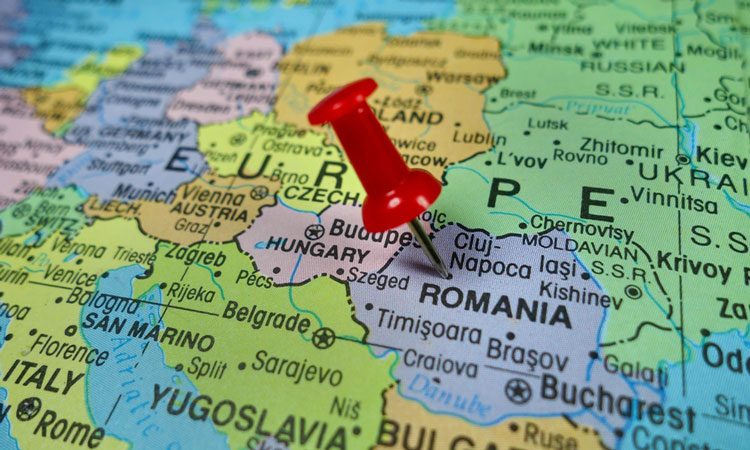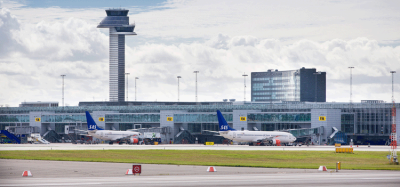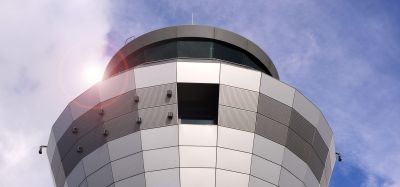IATA pursues Romanian and EU aviation competitiveness
- Like
- Digg
- Del
- Tumblr
- VKontakte
- Buffer
- Love This
- Odnoklassniki
- Meneame
- Blogger
- Amazon
- Yahoo Mail
- Gmail
- AOL
- Newsvine
- HackerNews
- Evernote
- MySpace
- Mail.ru
- Viadeo
- Line
- Comments
- Yummly
- SMS
- Viber
- Telegram
- Subscribe
- Skype
- Facebook Messenger
- Kakao
- LiveJournal
- Yammer
- Edgar
- Fintel
- Mix
- Instapaper
- Copy Link
Posted: 15 April 2019 | International Airport Review | No comments yet
IATA has urged the Romanian government to focus on aviation competitiveness as a means to strengthen the economy of Romania, and is pushing for stronger aviation policies in competitiveness across the whole of the EU.


Air transport is a key enabler of economic activity in Romania, supporting 107,000 jobs and contributing €2.3 billion to the economy. In 2017, 10 million passengers departed from Romania’s airports, however this figure could rise by 50 per cent by 2037, supporting an additional 23,000 jobs, if Romania enhances the conditions on which its aviation sector can be competitive.
Air transport competitiveness in Romania
IATA published a competitiveness report on Romanian aviation which demonstrates a gap between the nation’s competitiveness level (ranked at 4.7) and the overall European average (ranked 5.9). Based on the report findings, IATA highlighted three priority areas: Passenger facilitation, expanded terminal capacity and reduced infrastructure costs. In addition, airspace modernisation is identified as a crucial element to support future growth and efficiency.
Leading an agenda for stronger European aviation
Romania’s Aviation Day brought together key stakeholders to hear from leading policymakers such as Dragos Titea (Romanian Secretary of State for Transport), Henrik Hololei (Director General for Mobility and Transport European Commission), Catalin Radu (Deputy Director ICAO Air Navigation Bureau), Maria Magdalena Grigore (Romanian State-Secretary Ministry of Foreign Affairs), Mikolaj Wild (State Secretary in Poland Ministry of Infrastructure), and Romanian MEPs Claudia Tapardel and Marian Jean Marinescu.
Minister Cuc’s keynote speech highlighted his country’s priorities for its Presidency of the European Council. Under the motto “Cohesion, a common European Value” he explained how competitiveness, innovation and digitalisation, connectivity, climate and sustainability were all lines of action for transport policy under Romania’s Presidency.
In his keynote address, Rafael Schvartzman highlighted the benefits of modernising European airspace and the important economic and environmental benefits it would create.
His key recommendations included:
- For States, ANSPs and staff associations to look at how air traffic management staff are deployed this summer to avoid some of the significant delays air travellers suffered last year (Air Traffic Management (ATM) delay in Europe doubled in 2018 and is set to get even worse in 2019)
- Europe’s airspace infrastructure to be modernised and investments aligned between airlines and service providers
- For governments to treat air transport and air traffic management as a truly global business. Europe’s inconsistent ATM Service levels create delays, and haphazard and indirect flight routings, which all lead to wasted time and higher costs for passengers and airlines. The additional fuel burn also generates an unnecessary increase in CO2 emissions.
Airspace modernisation
Efficient ATM is a bedrock of a high-performance aviation sector. To complement the long-term aim of a Single European Sky to improve the safety, capacity, efficiency and environmental performance of European airspace, IATA is working with several air navigation service providers on National Airspace Strategies (NAS).
At the Aviation Day the Romanian government announced that it would support the development of a NAS to support more efficient capacity in Romania and to help deliver Single European Sky objectives.
Romanian Air Traffic Services Administration (ROMATSA) and IATA will strengthen their existing cooperation for this initiative, which is aimed at delivering benefits to the travelling public and the wider aviation community, while supporting the economic growth and competitiveness of the Romanian aviation sector.
The main aspects of the strategy cover leadership and a collaborative stakeholder approach, airspace management, and technical modernisation of the ATM system.
Mircea Bostina, Director General of ROMATSA, explained: “This week marks two landmark events for Romanian airspace, that will define our evolution in the decades to come. The new ATM system that became operational on 8 April implements new functionalities that increase capacity and flexibility, optimise airspace structure and align us with the latest technological developments.
“The collaboration with IATA on developing and implementing a national airspace strategy is a natural and much-needed step forward in bringing together all aviation stakeholders in Romania and setting together our priorities in order to meet customer demand, deliver on the SES high level goals and increase the competitiveness of the Romanian aviation sector and overall economy. We pride ourselves on having written aviation history in the past, but we are just as committed to embracing the future and rising up to the challenge of serving an ever-growing number of passengers at the highest standards of safety and efficiency.”
Rafael Schvartzman, IATA’s Regional Vice President for Europe, said: “Romania has a great opportunity to transform its aviation sector if the right policy levers are pulled. Our recommendations are, first, to promote innovative technology and processes to move passengers quickly. Second, to invest in more capacity at airports and in air traffic management. And third, to ensure infrastructure charges are set in transparent consultation with users. If Romania can take these steps, its economic and social development will significantly gain from enhanced air connectivity.
“The commitment to develop a national airspace strategy shows that the government is already taking the necessary steps to enhance the nation’s aviation competitiveness. Optimising Romania’s airspace will not only benefit Romania but the wider European network. We congratulate ROMATSA for its vision, and look forward to working with them to make airspace modernisation a success.”
The Romanian National Airspace Strategy will include:
- Enhancement of coordination for more efficient flightpaths
- Airspace optimisation at regional level as well as between regions
- Increased capacity while ensuring safety levels
- Improved punctuality of flights
- Better sharing of information across the European air transport network.
Related organisations
European Union (EU), International Air Transport Association (IATA), Romanian Air Traffic Services Administration (ROMATSA)
Related regions
Related people
Catalin Radu (Deputy Director ICAO Air Navigation Bureau), Dragos Titea (Romanian Secretary of State for Transport), Henrik Hololei (Director General for Mobility and Transport European Commission), Maria Magdalena Grigore (Romanian State-Secretary Ministry of Foreign Affairs), Mikolaj Wild (State Secretary in Poland Ministry of Infrastructure), Mircea Bostina (Director General of ROMATSA), Rafael Schvartzman (IATA’s Regional Vice President for Europe)


















